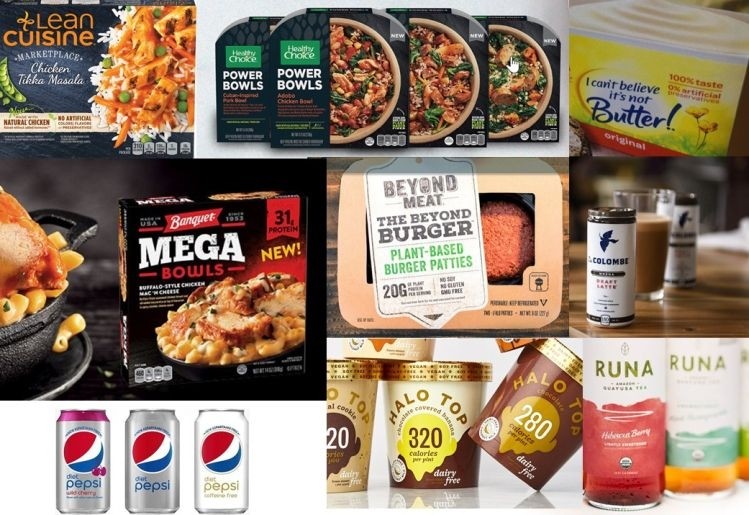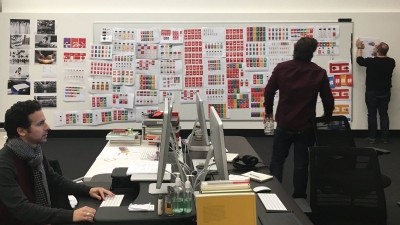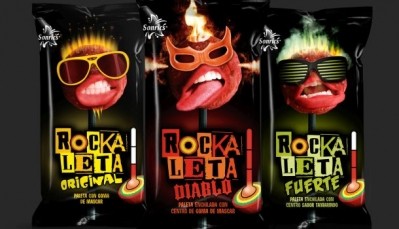What’s your brand story? And if you don’t have one, how can you find one?
Branding expert: You’d be amazed how many food companies cannot answer the question: Why are you here?

This might sound like branding 101, says Michelle Barry, president and CEO at design agency and consumer market research firm Centric Brand Anthropology, but you’d be amazed how many companies – especially those that have been around for a while - cannot actually answer the basic question: ‘Why are you here?’
She adds: “I’d say that many of the start-ups we’ve been seeing over the last five years or so have a more articulated vision and mission of why they are in business, whereas we talk to other brands that have been around for decades and some of them have no brand architecture, no vision, no mission, no core values, no sense of their why, of their character.”
What’s your brand story? And if you don’t have one, how can you find one?
So what can be done with brands like this? And what’s wrong with just selling a good product that people enjoy (hopefully without destroying the planet in the process)? Does every brand really have to have an ‘authentic’ brand story or is ‘authenticity’ a word that is becoming somewhat overplayed in food marketing?
You can’t and shouldn’t try and manufacture authenticity, says Barry, but if the ‘Why are you here?’ question genuinely has you scratching your head, it probably doesn’t bode well for your business.
“We literally have to go in and deconstruct what some brands have become over 30 years to help them find their why, and help them figure out how to tell their story and be more of a soulful company that has something to say beyond selling a commodity,” says Barry.
“Most of the brand re-working we’re doing is with [more established] companies that started a cool company, they have some great products and a decent design and visuals, but there is nothing underneath it. All that cultural work that now is a requirement for consumer brands, they are trying to create from scratch.”
Manufacturing authenticity?
But how can brands – especially huge legacy brands – do that in an authentic way that resonates with Millennials in particular, given their innate suspicion of ‘big food’ and their uncanny ability to sniff out bulls**t?
It’s hard, but it’s possible, claims Barry. “It's possible, if only because every company is run by humans, whether it is a start-up or a multinational brand. There is blood pumping through every company, emotion, aspirations, stories. It may not be the founder’s story, but every company has a story and to get to it, it’s a matter of deep listening and revealing, rather than creating.”
Indeed, the process of sitting down and thinking about this can often create, or reignite, a spark among employees, she says. “It can be a case of... so this is why we’re here.”
“We literally have to go in and deconstruct what some brands have become over 30 years to help them find their why, and help them figure out how to tell their story and be more of a soulful company that has something to say beyond selling a commodity...
"Most of the brand re-working we’re doing is with [more established] companies that started a cool company, they have some great products and a decent design and visuals, but there is nothing underneath it. All that cultural work that now is a requirement for consumer brands, they are trying to create from scratch.”
Michelle Barry, president and CEO, Centric Brand Anthropology
There are different rules of engagement for larger companies
But can all brands be refreshed and revitalized, or are some just on a declining trajectory, and the best you can hope for is managed decline? What about Banquet, or Diet Pepsi, or I Can’t Believe It’s Not Butter?
Says Barry: “There are different rules of engagement for larger companies and you have to be careful. For example, you could say you’re a 'family company.' But it may be that consumers don’t actually care about this. Consumers will ask: Why does that actually matter to me? What is it about the family? Have certain values been passed down through the generations? Is there ancient wisdom there?”
Some companies that “have let their brand go for so long and have not paid attention to the fact that their brand has become irrelevant to consumers” could be in trouble, however, she said.
“Here it [whether they can reverse their flagging fortunes] depends on the culture of the company. Do you have a team that is truly interested in being interesting? In the larger companies there are so many people that are coming in with a set of expectations that it can be hard to step back and have an honest, human conversation about the brand(s) and think about what moves you about this brand or business, about why you get out of bed in the morning and go to work here; it ends up being a more business conversation.”
Who really owns your brand?
The other challenge with larger businesses is that this conversation may to some extent have been outsourced to outside agencies, she says. “A lot of companies don’t really own their own brands internally. The passion is not there.”
Sometimes, she said, attempts to refresh large brands to make them more relevant can focus too much on product attributes - for example switching from an artificial to a natural sweetener, or going non-GMO – and not on brand attributes.
“Ingredients aren’t brands, they are not own-able or differentiated; by reformulating, they are staying on track but not staying ahead.”
Michelle Barry: 'We start with where consumers are, and then move onto brand tactics...'
“I’m interested in new techniques that help you get to what people don’t say in focus groups, what they can’t talk about, the emotional and sensory experiences they have.
“We’ve also been diving deep into whether artificial intelligence platforms are a good source of data and if so, how you triangulate that data with more qualitative ethnographic insights, and how can you extrapolate that out into bigger broader trends.
“We’ve been very effective over the past year at identifying trends very early on through real time data capture… we’ve designed behavioral algorithms to tap into larger conversations that are happening out there on the network, not just one or two social network platforms, but hundreds of different API sources that we weave together.
“We can then do linguistic analysis, symbolic analysis, so we can understand who the influencers are and where the stories and originating; how to tap into real conversations – not the conversations brands think consumers are having, or want them to have. We identify the stories that are actually happening and then we can help brands drop them into the right environment so they show up in a relevant way instead of trying to forcefeed things to consumers. We start with where consumers are, and then move onto brand tactics.”
Michelle Barry, president and CEO, Centric Brand Anthropology










